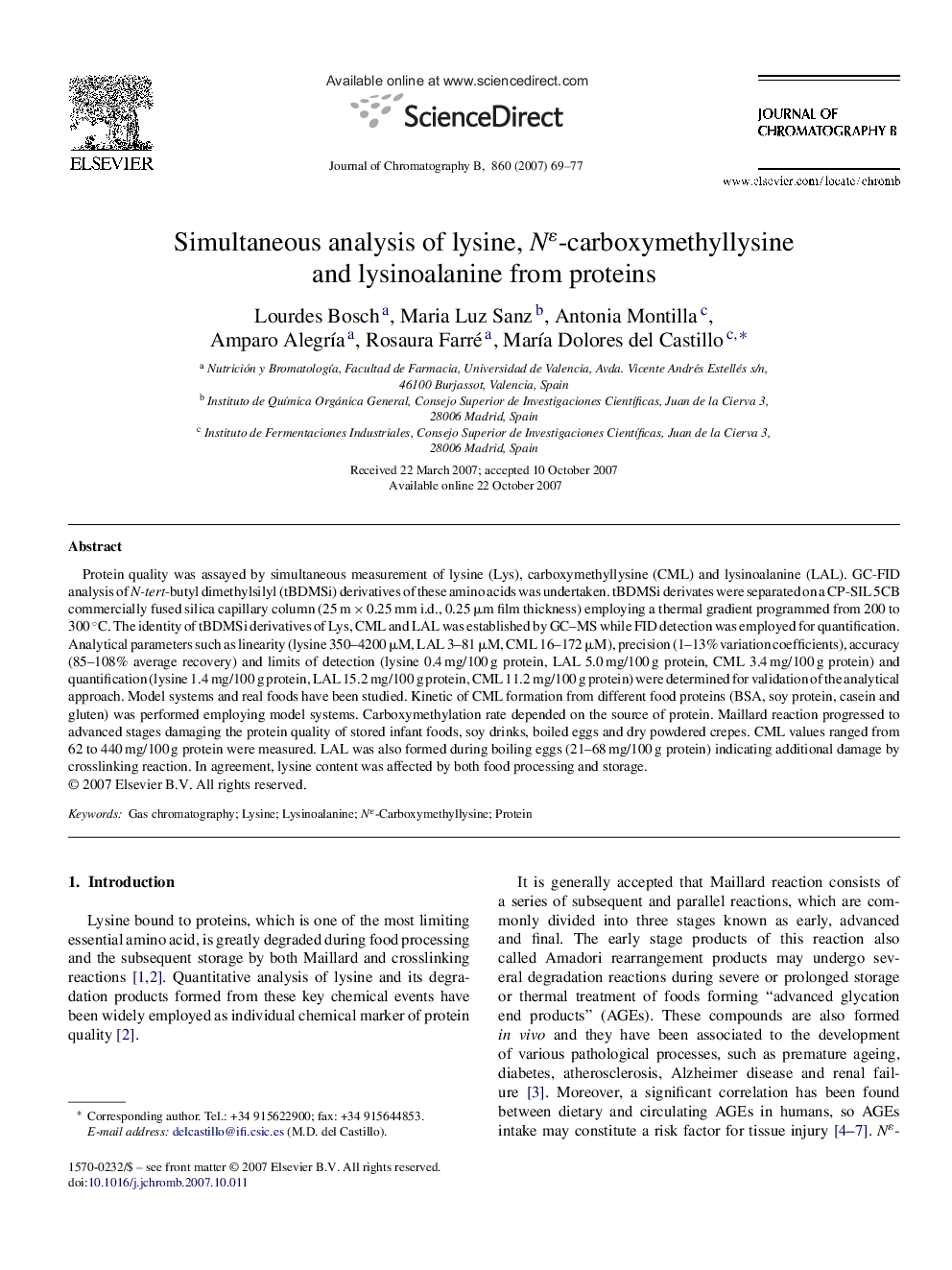| Article ID | Journal | Published Year | Pages | File Type |
|---|---|---|---|---|
| 1215862 | Journal of Chromatography B | 2007 | 9 Pages |
Protein quality was assayed by simultaneous measurement of lysine (Lys), carboxymethyllysine (CML) and lysinoalanine (LAL). GC-FID analysis of N-tert-butyl dimethylsilyl (tBDMSi) derivatives of these amino acids was undertaken. tBDMSi derivates were separated on a CP-SIL 5CB commercially fused silica capillary column (25 m × 0.25 mm i.d., 0.25 μm film thickness) employing a thermal gradient programmed from 200 to 300 °C. The identity of tBDMSi derivatives of Lys, CML and LAL was established by GC–MS while FID detection was employed for quantification. Analytical parameters such as linearity (lysine 350–4200 μM, LAL 3–81 μM, CML 16–172 μM), precision (1–13% variation coefficients), accuracy (85–108% average recovery) and limits of detection (lysine 0.4 mg/100 g protein, LAL 5.0 mg/100 g protein, CML 3.4 mg/100 g protein) and quantification (lysine 1.4 mg/100 g protein, LAL 15.2 mg/100 g protein, CML 11.2 mg/100 g protein) were determined for validation of the analytical approach. Model systems and real foods have been studied. Kinetic of CML formation from different food proteins (BSA, soy protein, casein and gluten) was performed employing model systems. Carboxymethylation rate depended on the source of protein. Maillard reaction progressed to advanced stages damaging the protein quality of stored infant foods, soy drinks, boiled eggs and dry powdered crepes. CML values ranged from 62 to 440 mg/100 g protein were measured. LAL was also formed during boiling eggs (21–68 mg/100 g protein) indicating additional damage by crosslinking reaction. In agreement, lysine content was affected by both food processing and storage.
